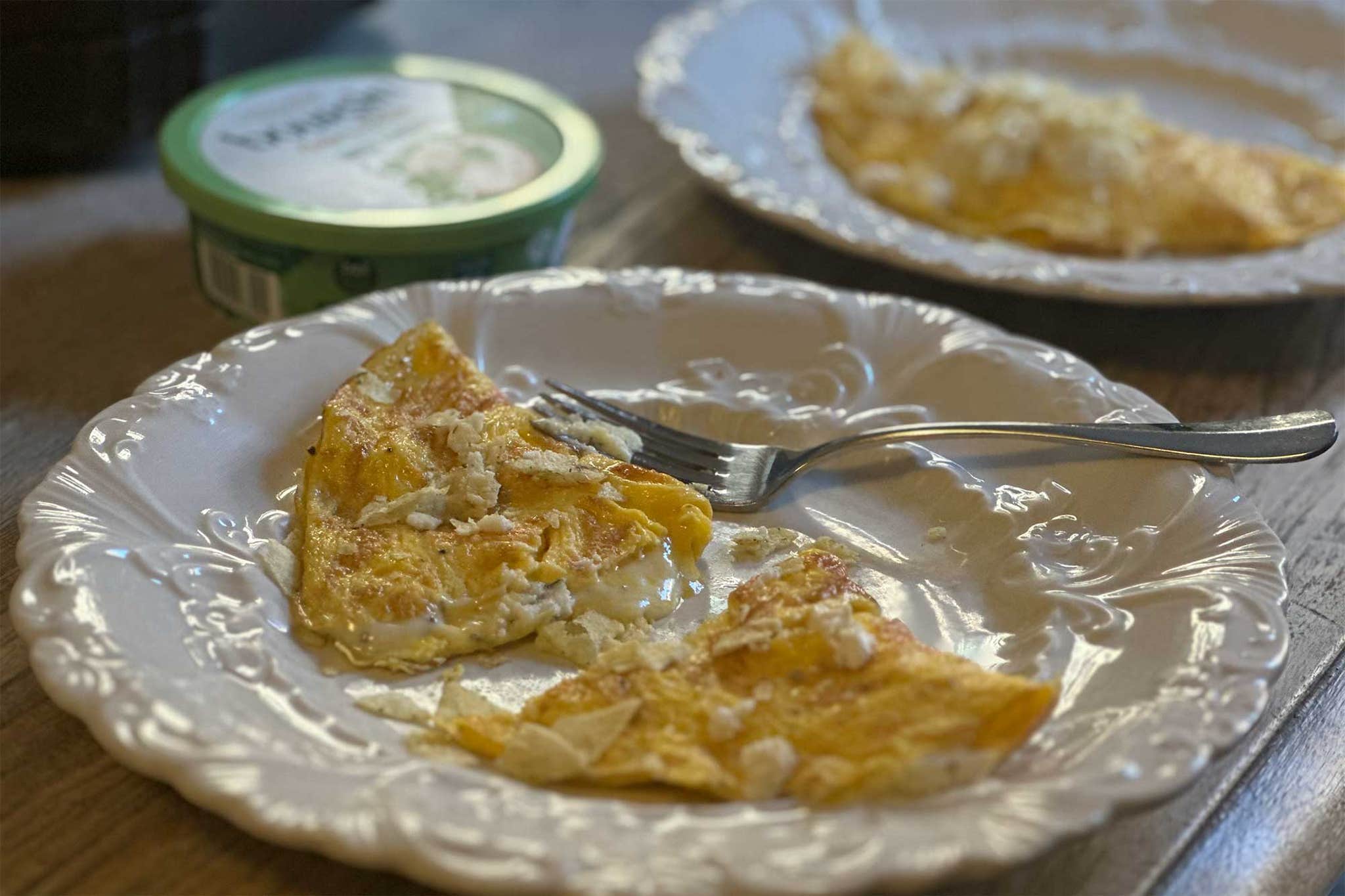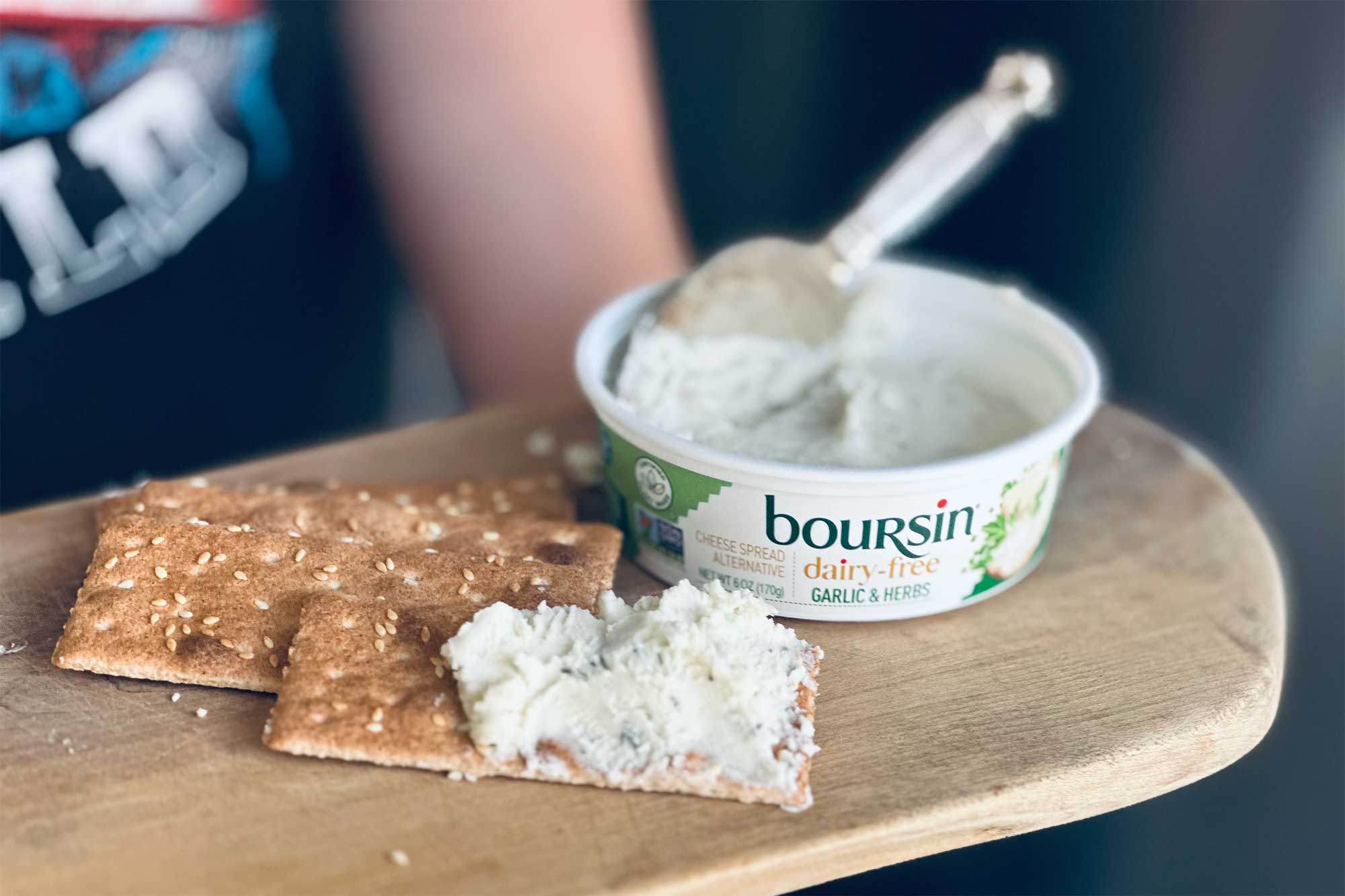We’re adding a little something extra to our coverage of sustainable eats this year. The universe of plant-based products is growing every day and shows no signs of slowing down. So, we’re making it our mission to test the newest and most popular dairy and meat alternatives out there—from faux cheeses to would-be meats to frozen treats—to let you know whether they live up to the hype.
First up is a plant-based version of French cheesemaker François Boursin’s namesake block of herb-flecked fromage. Granted, the dairy-free take on this cheese board stalwart has been on shelves for a while now, but it consistently ranks among faux-cheese-lovers’ faves, so we wanted to see what the fuss was about. Besides, even though the OG’s been around since 1963, this creamy classic has been enjoying something of a comeback, going viral on TikTok (in the Baked Boursin Tomato Pasta recipe) and taking a star turn as an omelet filling in The Bear.
So, is this plant-based cheese a true 1:1 swap for the real deal? We ate it right out of the container, slathered it on crackers, and made that omelet with it to find out.
What is it, exactly?
As far as faux cheeses go, there’s nothing unusual about the ingredients list for dairy-free Boursin—especially if you compare it to the slate of other plant-based cream cheeses on the market. It’s made primarily from coconut and canola oils, thickened with potato and corn starch, and flavored with garlic powder, parsley, and chives.
It comes in a shallow 6-ounce plastic tub—a departure from the original, which is shaped like a tall hockey puck and foil-wrapped in a cardboard box. It runs about $7 (same as the original) and is available at national supermarket chains like Publix, Kroger, Sprouts, and Trader Joe’s.
How’s it taste?
With the first bite, our brains registered “Boursin,” which, for the uninitiated, tastes like a garlic-and-herb-flecked cousin of Philadelphia, with a pleasant tang offsetting its rich creaminess. In the faux version, the expected garlic-and-chive notes are there, though they’re slightly subtler than they are in the original. The flavor’s also a tad less tangy and salty, which is surprising considering the two products have the same sodium count. What’s not there is the chemical aftertaste we’ve noticed in many other alt cheeses like ones from The Laughing Cow.

Texturally, the plant-based Boursin is a bit less dense than its predecessor—perhaps because it has about 10% less fat. And, while it retains most of the OG’s characteristic crumbliness, the mouthfeel is slightly smoother.
Is it fooling anyone?
Well, yes and no. After smearing it on crackers (delightful!) we whipped up a pair of omelets, one filled with the plant-based alternative and one with the original, and ate them side by side. The two fillings were equally oozy without being drippy, and pretty much indistinguishable from one another. “That might be the most convincing facsimile of cheese I’ve ever had,” said one 21-year-old lactose-intolerant taster who’s eaten more than her fair share of nondairy dupes.
On a cheeseboard, however, this Boursin is not fooling anyone. It’s a safe assumption that Boursin’s longevity and appeal are due at least in part to its unmistakable look—that distinctive shape, complete with ridges up and down the sides from the foil packaging—that makes it perfectly at home as an appetizer showpiece. If the dairy-free version were packaged like its cow-based counterpart, we’d be hard pressed to spot the difference.
The bottom line: 9/10, a must-try
Dairy-free Boursin would be a perfect no-compromise swap for the original if we didn’t miss the characteristic cylinder shape that works better on a cheese board. The U.K. version is the classic puck, so maybe we’ll have perfection stateside soon enough.

